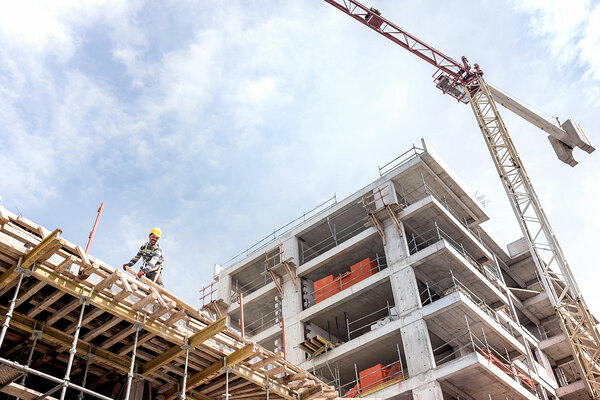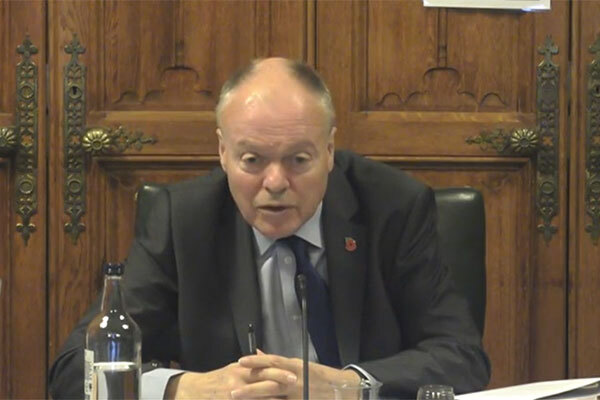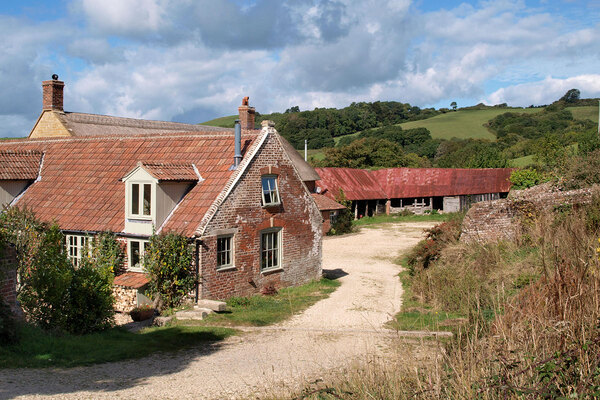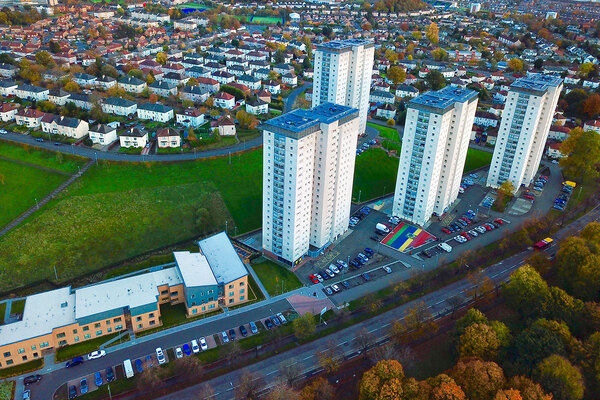You are viewing 1 of your 1 free articles
Labour’s housing inheritance – can we be optimistic?
Jules Birch analyses future projections for housebuilding and cross-subsidy
The economic inheritance of the next government will be so dire that it’s hard to avoid thinking that the prospects for housing investment will be even worse.
Take an already inadequate Affordable Homes Programme, add higher costs for construction, building safety and decarbonisation, and follow the freeze on capital investment implied in current spending plans, and you seem to have a recipe for housing disaster.
However, an important chapter in the latest UK Housing Review challenges that view on two important levels.
Glen Bramley builds on his long-standing work on housing need by essentially looking through the other end of the telescope at different scenarios for total completions of new homes in 2031 (ie after market conditions have recovered from the cost of living crisis etc).
His ‘low’ scenario corresponds with actual performance recently, while ‘very low’ takes account of the current economic climate and recent changes in government planning policy that will reduce supply still further.
As the graph shows, under the ‘low’ scenario, there would be just 211,000 completions per year by 2031, with around 66,000 affordable homes including 35,000 for social rent. ‘Very low’ cuts those numbers by more than 20% to just 164,000 overall and 50,000 affordable, including 24,000 for social rent.
Judged against those numbers, the other three scenarios look a long way off, especially the promised land of ‘High-medium’ and ‘high’, which correspond with Labour’s pledge of 1.5 million new homes over five years and long-standing calls for 90,000 social rent homes a year.
These scenarios do not just increase supply and affordability, they also target more supply on areas with the greatest affordability problems and unmet housing need. The chances of a family in housing need being rehoused within the social sector within a year increase most in London and the South of England.
They deliver economic growth, too. As Glen Bramley notes: “An incoming chancellor after the next general election, facing a very tough set of fiscal choices, might find a scenario like ‘high-medium’ extremely attractive. This would deliver a lot more housing overall as part of a growth agenda, but including a meaningful and sizeable jump in social housing, well-justified by the evidence on needs and outcomes, and feasible within current spending levels.”
So far, so good, but now comes the difficult bit. In 2022-23 there were just under 10,000 social rent completions from all sources, so how could the next government pay for all of this given its dire fiscal inheritance? This is where the chapter strikes two much more optimistic notes.
“In 2022-23 there were just under 10,000 social rent completions from all sources, so how could the next government pay for all of this given its dire fiscal inheritance?”
First, analysis shows that much more cross-subsidy can be squeezed out of land values and the planning system when market conditions improve: “By the early 2030s market conditions are projected to be such that very large surpluses can be generated on market developments, ranging from £18.5bn in the very low scenario to between £38bn and £46bn on the three variant ‘high’ scenarios (at outturn prices),” says Glen Bramley.
His model estimates that up to £27bn in cross-subsidies for affordable and social housing could be delivered under the different scenarios. That in turn reduces the net requirement for public subsidy to £6.7bn for the ‘very low’ scenario, £8.4bn for ‘low’, £9.1bn for high-medium, £13.4bn for high and £15.9bn for high modified by 20% direct subsidy.
Second, there would be more public money to play with if the budget currently devoted to the private sector could be redirected into social housing.
The first three figures are well within the current total of £8bn a year of grants and loans for housing identified elsewhere in the UK Housing Review: just under half of the £34bn identified in a summary of government support for housing over the four years from 2021-22 to 2024-25 is for private sector grant and loan programmes for housebuilding and homeownership.
The results are summarised for the six different scenarios in this graph:
A lot of questions flow from this and I’m slightly sceptical about some of it. First, will it really be so simple to convert cross-subsidies like this in a system that house builders are experts at exploiting to their own advantage and where local authorities lack expertise and resources?
Second, house builders will lobby fiercely against those grants and loans being taken away from them and will argue strongly that this will stymie development. How will a government that sees housebuilding as vital to its growth plans react?
That aside, evidence like this adds credibility to Labour claims that planning reform plus a new generation of new towns will lead to more market homes that will in turn generate more funds for affordable housing via a reformed Section 106 process.
“Evidence like this adds credibility to Labour claims that planning reform plus a new generation of new towns will lead to more market homes that will in turn generate more funds for affordable housing via a reformed Section 106 process”
As I’ve argued before, that could be how deputy leader Angela Rayner could pledge “the biggest boost to affordable and social housing for a generation” at the Labour Party Conference without promising any new investment.
It’s not hard to think of reasons to doubt this logic: advocates of more radical reform of planning will argue that this still amounts to mere tinkering with a system that is fundamentally flawed while others will question whether there can be market-led solution to market failure.
Another objection is that, while the Treasury may find lower demands for investment more palatable, we won’t know if it is enough to produce the results we need for affordable homes until deep into a second Labour term.
However, plans announced by Keir Starmer this week suggest that the party is off to a good start in its thinking. Land dubbed ‘grey belt’ – brownfield and poor-quality sites within the green belt – will be released for housing with a requirement that at least 50% of it must be affordable.
Those like me who’ve been around too long cannot help but think back to 1997, when an incoming Labour government had pledged to stick to Conservative spending plans in its first two years in office. Investment in social housing did not recover until Tony Blair’s second term.
A big difference was that New Labour did not seem to believe there was a problem: much of the party leadership from Tony Blair down represented seats in Northern England that had suffered from widely reported low demand for new social homes.
This was a grave mistake that ignored big problems in London and elsewhere. Set alongside a liberalised mortgage market and low interest rates under an independent Bank of England, and the seeds were sown for the affordability and homelessness crises that germinated under the even lower rates and austerity that followed the financial crisis.
If Labour really does win the next election, then it is at least looking in the right direction this time.
Jules Birch, columnist, Inside Housing
Sign up for our development and finance newsletter
Already have an account? Click here to manage your newsletters













